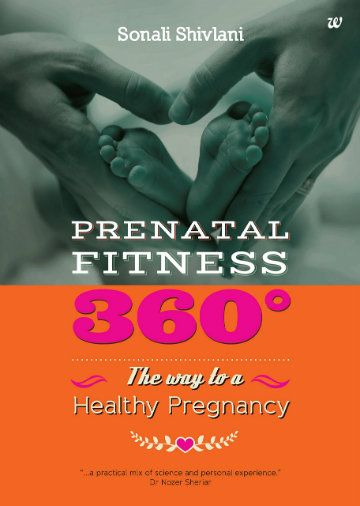- What is Cord Blood?
- What are Stem Cells?
- What do Cord Blood Stem Cells do?
- Are cord blood stem cells different from other stem cells?
- What are some of the diseases treated by stem cells?
- What are some situations when it is not possible to collect cord blood?
- What is the likelihood that my child will need his or her own cord blood?
- Are twins or multiples eligible to donate?
- What are cord tissue stem cells?
What is Cord Blood?
After birth, the umbilical cord is cut. Some blood remains in this cord and also the placenta that is attached with it. This is called cord blood or placental blood or umbilical cord blood. This cord blood contains red blood cells, white blood cells, platelets and plasma.
Added to this it also contains hematopoietic (blood-forming) stem cells. Due to the presence of these stem cells, cord blood is already being used in transplants instead of the bone marrow. Investigations are also on to find out the possibility of using these stem cells to replace cells of other tissues such as the nerve or the heart as well.
What are Stem Cells?
Stem cells are a class of undifferentiated cells. They can differentiate into specialized cell types like skin, muscle, bone, etc. There are four types of stem cells.
- Adult stem cells – These exist throughout the body and have been found in the brain, bone marrow, blood vessels, skeletal muscles, skin, and even the liver.
- Embryonic stem cells – These are derived from a 4-5 day old human embryo that is in the blastocyst phase. Usually only those embryos that have been developed through an IVF and have not been used for implantation inside the woman are used for this.
- Fetal stem cells – Stem cells taken from aborted fetal tissue
- Cord blood stem cells – It is only very recently that stem cells are also being taken from the cord blood.
Since stem cells can become many different types of specialized cells, they have the potential to treat many diseases like Parkinson’s, Alzheimer’s, diabetes and cancer. Embryonic and foetal stem cells have the potential to develop into a greater variety of cells than adult stem cells can.
What do Cord Blood Stem Cells Do?
Cord blood stems cells are being used in the treatment of nearly 80 diseases.
Cord blood is transplanted into the patient, where the stem cells can make new and healthy blood cells and thereby replace the ones damaged by the disease or my medical treatment like chemotherapy.
It is being used to treat children with diseases like leukemia, genetic blood diseases like Fanconi anaemia, thalassemia, Hodgkin’s disease and non-Hodgkin’s lymphoma. It has also been used to treat rare, almost fatal, infantile metabolic disorders like Krabbe disease and Sanfilippo syndrome.
Let us take an example here:
In a patient with leukemia, first chemotherapy is used to get rid of the damaged cells from the body. If this fails or if the disease recurs then usually a stem cell transplant is done.
Unlike stem cells from the bone marrow, in such cases, if cord blood stem cells are used, then the matching is easier and chances of rejection during transfusion is greatly diminished.
Studies are also being carried out to find more diseases in children that cord blood stem cells can treat. For example:
- Cerebral palsy and autism
- Type 1 diabetes
- Hydrocephalus (fluid in the brain)
Are cord blood stem cells different from other stem cells?
Cord blood stem cells are younger and therefore more flexible compared to adult stem cells or even those taken from the bone marrow.
It is a better alternative than bone marrow transplants. This is because:
- They are easier to collect
- They can be stored till a requirement arises.
- They are less likely to cause a rejection by the patient’s body and therefore do not need to be perfectly matched to the patient
- They carry a lesser risk of transmissible viral infections.
- They have a high probability of matching a current or future sibling.
However, its drawback lies in the fact that treatments of adults with cord blood stem cells have proven to be very challenging.
This is because the cord blood does not contain as many hematopoietic stem cells as the bone marrow does. Also cord blood can only treat blood related diseases.
What are some of the diseases treated by stem cells?
Stem cell transplants have been in use since the 1960’s. In 1988 cord blood stem cells were used for the first time for a blood transplant.
Today cord blood stem cells are being used to treat many diseases.
Most diseases that are being treated today are blood related disorders like leukemia, bone marrow cancers, inherited red blood cell abnormalities such as sickle cell disease and anemia.
Investigations are on to use cord blood stem cells in other areas too. These include diabetes, cerebral palsy, autism and certain heart defects too.
What are some situations when it is not possible to collect cord blood?
Post birth, there can arise some situations when not enough cord blood can be collected from the umbilical cord.
This can occur if the baby is premature (less than 36 weeks) or if the mother delivers more than one baby in which case the placenta is shared.
It also occurs if the delivery is performed suddenly due to emergency situations.
Problems with the mother could also cause the non-collection of cord blood. This is likely if there are infections like:
- Herpes
- Genital warts
- Infection of the placenta
- Infection of the amniotic fluid
It could also happen if the mother had an infectious disease during pregnancy which could have been transmitted to the infant during birth.
Collection of cord blood is also discouraged in cases where there is a family history of genetic diseases.
At times, if the pregnancy is due to egg or sperm donation, then cord blood stem cells are not collected.
What is the likelihood that my child will need his or her own cord blood?
Doctors cannot really say what the exact chances are that the child will need her own cord blood in the future. Currently the probability is estimated to be less than 4/100th of one percent.
In fact, many of the proven treatments that use cord blood stem cells cannot be cured by using the patient’s own cord blood. This is because their own cord blood could have the very same cells that caused the disease.
Hence most of the times the cord blood stem cells from a matched donor is used. Usually siblings make the best donors. Else one has to resort to public cord blood banks for the donation.
However, there are quite a few emerging therapies that seem to show that stem cells from the child’s own cord blood can be used. These include treatments like type 1 diabetes, spinal injury, autism and hearing loss.
Are twins or multiples eligible to donate?
Cord blood donation to public banks might not be possible if you are expecting twins.
Tissue types are used to match a cord blood unit to a patient. In case of twins there could be mixing up of the tissue types of the two umbilical cords. Hence public banks discourage cord blood donation from mothers who deliver twins or multiples.
However, it is possible to bank the cord blood stem cells of multiple children with private banks. In fact, if one of your twins develops a blood related disorder that needs a stem cell treatment, then the cord blood collected from the umbilical cord of the other can be effectively used for the treatment.
What are cord tissue stem cells?
Other than the blood taken from the umbilical cord after birth, some cord blood banks also offer the preservation of stem cells taken from the cord tissue.
In order to collect the cord tissue, 4-6 inches of the umbilical cord is cut after birth and then sent to the storage facility for preservation.
The cord tissue is rich in mesenchymal stem cells (MSCs). These have the property to develop into cells like the cartilage, muscle, and nerve cells.
However, cord tissue research is still at a very nascent stage. The first clinical trial using cord tissue was done in 1995. Hence most banks preserve the tissue as a whole for a family’s potential future use.





